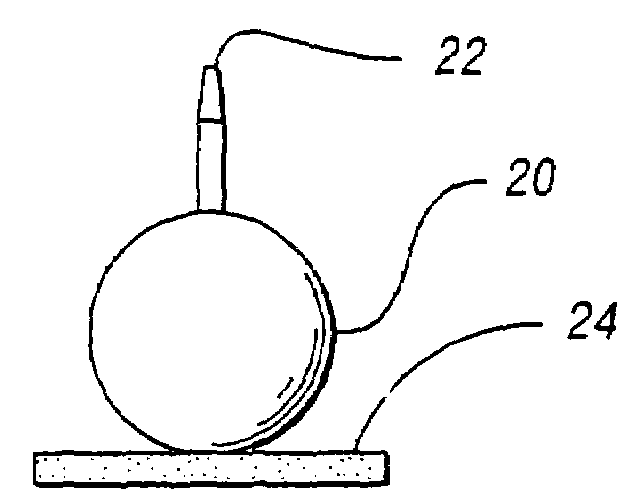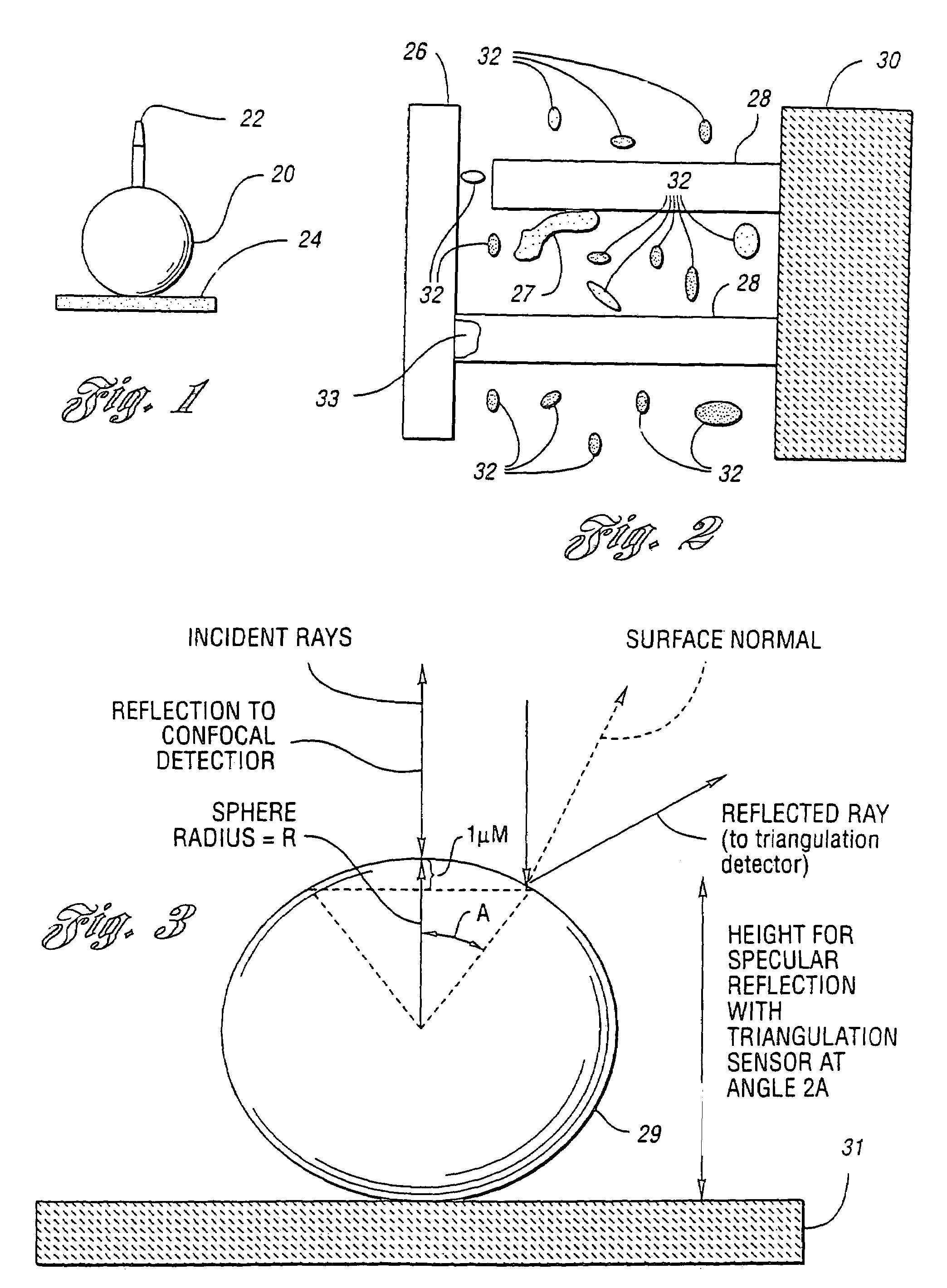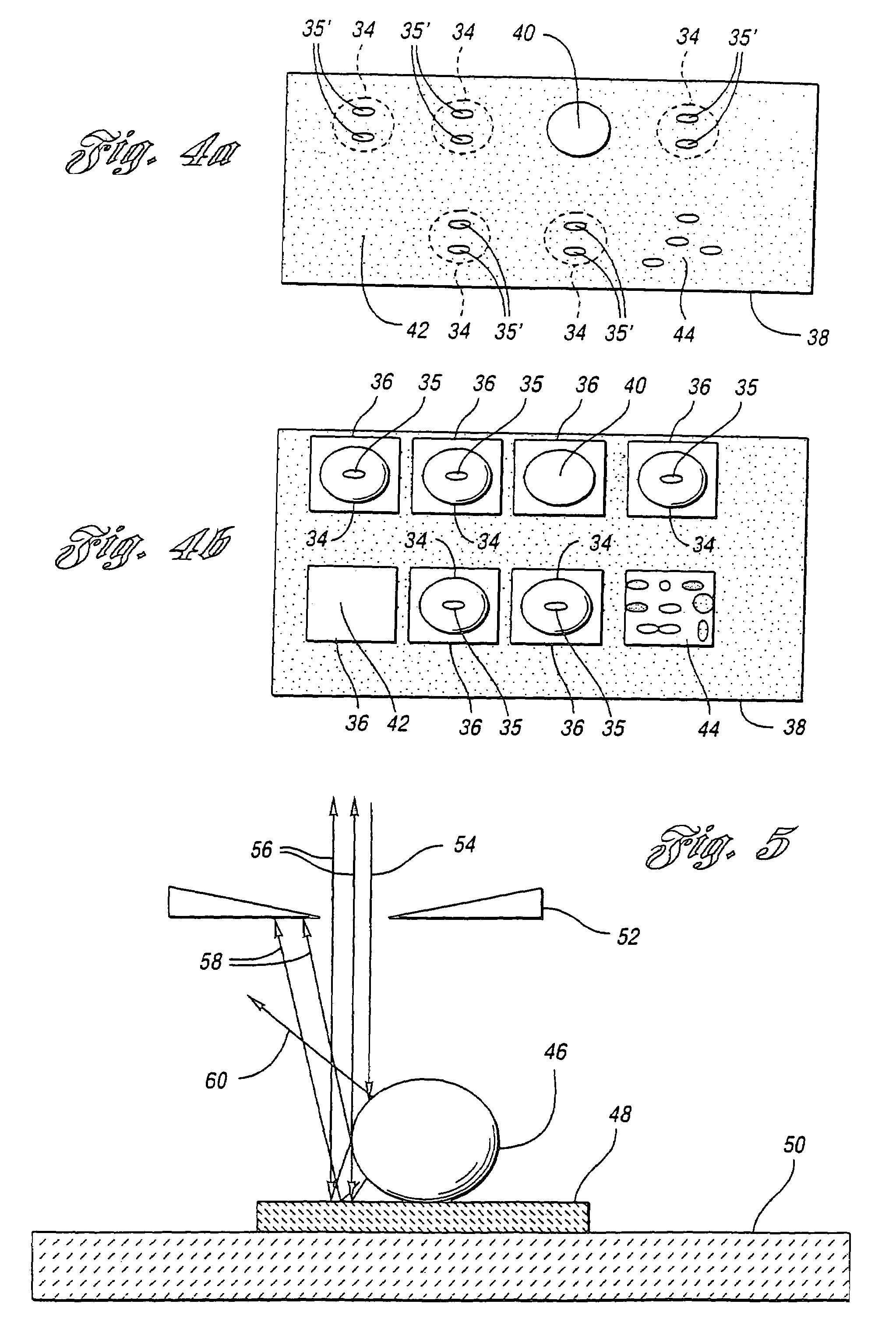Method and system for high speed measuring of microscopic targets
a high-speed, target technology, applied in the direction of instruments, optical elements, discharge tubes/lamp details, etc., can solve the problems of limiting system performance, limiting the accuracy of triangulation systems, and not being immune to fundamental limitations
- Summary
- Abstract
- Description
- Claims
- Application Information
AI Technical Summary
Benefits of technology
Problems solved by technology
Method used
Image
Examples
Embodiment Construction
[0078]FIG. 9 is a simplified schematic view, without optical elements, of an integrated triangulation-confocal system, generally indicated at 10, constructed in accordance with the present invention. The system 10 includes a laser 11 (i.e. L1), a beam deflector 12 and a beam splitter assembly 13. The system 10 also includes a pair of spatial filters in the form of slits 14 and 15. The system 10 further includes first and second position sensitive detectors 16 and 17, respectively, and a photodiode detector 18. The detectors 16 and 17 provide triangulation analog signals to a triangulation signal processor 19 for triangulation signal processing and the detector 18 provides confocal analog signals to a confocal signal processor 21 for confocal signal processing. The resulting digital Z (i.e. height) and grey scale data from the processor 19 is combined with digital confocal slice data (≧12 bits typical) from the processor 21 by a data processor 23 which provides multi-sensor data proc...
PUM
| Property | Measurement | Unit |
|---|---|---|
| height | aaaaa | aaaaa |
| diameter | aaaaa | aaaaa |
| diameter | aaaaa | aaaaa |
Abstract
Description
Claims
Application Information
 Login to View More
Login to View More - R&D
- Intellectual Property
- Life Sciences
- Materials
- Tech Scout
- Unparalleled Data Quality
- Higher Quality Content
- 60% Fewer Hallucinations
Browse by: Latest US Patents, China's latest patents, Technical Efficacy Thesaurus, Application Domain, Technology Topic, Popular Technical Reports.
© 2025 PatSnap. All rights reserved.Legal|Privacy policy|Modern Slavery Act Transparency Statement|Sitemap|About US| Contact US: help@patsnap.com



